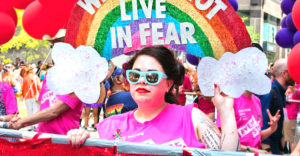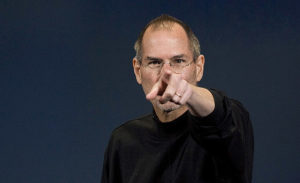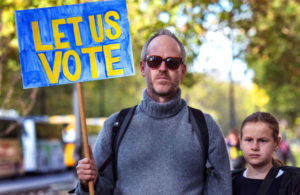This article was first published on 27 May, 2021
Neo fights his way free of the membrane. He sits bolt upright, slime sluicing from his bald skull, and stares in horror. Facing him is an endless vista of identical pods, each containing a dreaming human, plugged by metal tubes into a simulation while their bodies are tapped for energy as living batteries.
A machine disconnects him from the tubes. A hatch opens, and Neo is flushed, screaming, into the start of his new life.
The Matrix came out in 1999. Its cultural impact is so profound it coined a whole political vocabulary: the ‘pill’, a revelation that destroys your worldview but awakens you to a new truth.
Offered a choice between a ‘blue pill’ that will deliver blissful ignorance in a comforting lie, or a ‘red pill’ that will awaken him to grim reality, Neo takes the red one. He wakes up from the simulation, to the horror of his true existence as living energy source for a world of machines.
What would have happened to Neo, had he taken the blue pill? I like to think he’d have spent the rest of his life in the world of the classic sitcom Friends, whose cast are reunited today for a much-trailed reunion.
First aired in 1994, Friends ran for a decade. It was wildly popular, with some episodes attracting 50 million or more viewers, and in 2019 was still the most watched show on Netflix. Even for my Home Counties teenage years, thousands of miles from the sitcom’s Manhattan setting, its quirky storylines became short-hand for a whole worldview.
We knew it wasn’t real. The apartments were too big, and no one could possibly have that much time to sit around drinking coffee. But we talked about what we’d do ‘if we lived in Friends world’. It was a shared imaginary, a picture of how we’d love life to be.
In Friends world, we might be free of all obligations except the ones we’d chosen. Where parents were domineering (especially Ross and Monica’s mum), social life, was opt-in. People drifted in and out of the Central Perk café, and events were driven by happenstance and whim.
And yet the bonds of this elective ‘family’ were unshakeable. Neurotic men like Ross were not exhausting fun-sponges but lovably vulnerable. Naïvete in the style of Joey or Phoebe made you not abused and exploited but charming. On-off relationships like Ross and Rachel’s were not destroyed but cemented by having a baby. You could be mean, capricious or spiteful, and it was a foible your friends loved and forgave, not something that got you ostracised.
In a nutshell, Friends world was a soft-focus picture of the adult life the baby boomers hoped they’d created for their offspring: maximally connected, but also maximally free.
Around the time Ross and Rachel were getting amusingly married in Vegas while drunk, and The Matrix was featuring heavily in stoned conversations about the nature of reality, I was at university reading Walter J Ong. This Jesuit literary theorist argued in a seminal 1982 book, Orality and Literacy, that writing and reading are not simply a technology but radically consciousness-altering.
Literacy, Ong suggested, profoundly changes a culture. In societies that don’t use writing to store knowledge, ancestral memory is retained and relayed using song, spoken storytelling, pictures and artefacts. And this in turn, Ong pointed out, shapes the things that can be remembered.
“Try to imagine,” he suggests, “a culture where no one has ever ‘looked up’ anything.” Even the idea of objectivity, Ong argues, is inseparable from the act of writing things down so they stay unchanged over time.
Boomers David Crane and Marta Kauffman created ten series’ worth of maximal connection plus maximal freedom in Friends. But as they did so, new digital media were turning the “open” values that suffused the show — its open friendships and ambiguous love-affairs, its whimsical open-mindedness, sometimes neurotic open-heartedness — into something new. That transformation has been as profound, and perhaps as irreversible, as the shift Ong described between oral and literate cultures.
Because making the jump from a print-and-TV culture to our networked, interactive, digital one doesn’t just give us more ways of reading the same stuff. It changes if, how and what we read, and even how we think about reality itself.
To illustrate, consider Alan Partridge, another cultural icon of 1990s Britain – and also the subject of a relatively recent nostalgia reboot. Partridge was funny in 1997 because he was stuck in a timewarp. With his brown slacks and leatherette driving gloves, he was a petit-bourgeois Eighties hold-out desperately trying to stay afloat in a world he found increasingly incomprehensible.
Today, the digital networking of culture has also homogenised us. The kind of backwater where people can exist in a timewarp, Partridge-like, is increasingly difficult to find. And when you do stumble upon one, chances are someone with a MacBook is already there, Instagramming the colourful locals and tweeting about his “digital nomad” lifestyle.
So as a 21st-century TV host, Alan Partridge falls flat. It’s simply not plausible that someone could be as adrift from prevailing cultural currents as he is, and still have a job in TV. So instead of being deliciously cringe, what you get is a mean-spirited media-world in-joke about how embarrassed everyone would be if one of those people who’d never stand a chance in the industry actually became a TV presenter.
And with the homogenisation that has de-Partridged even our backwaters has come a sea-change in our ways of interacting, thinking, even understanding what reality is. Friends aired its last episode four months after the launch of another type of “friends”: the virtual, networked kind mapped by Facebook.
The shift from “Friends world” to “Facebook friends world” started out as a way of mapping aspects of our social worlds that were already there. To begin with, we added “friends” we actually knew. But over time, it came increasingly to stand in for those social worlds, as we’ve increasingly swapped real-life meetups for messenger groups. Now, accelerated still further by lockdowns, much of social life has withdrawn from IRL altogether for an online-only mulch of infighting and memes.
This in turn has taken the boomers’ “open” values in strange new directions. Whereas I spent my pre-internet teens poking around in arcane subcultures, today everything is “open” – or at least, it’s online in the public domain. You’d think that would make it easier to find like-minded souls, which is true — but those friendships are opt-in, like in Friends world, which means they’re also opt-out again.
Against that backdrop, it’s nigh-on impossible to create the kind of boredom and insularity that forges teenage subcultures. Instead, less-than-model-perfect girls like I was (which is to say, nearly all girls) spend their time ‘perfecting’ selfies with Facetune for public consumption. In the process, many grow terrified of meeting people in the flesh and revealing their less-than-perfect real selves.
And this has ridden on the coat-tails of a more general withering of ‘IRL’ social life. We don’t hang out in cafes any more in the expectation of bumping into friends. It’s been rude to phone someone out of the blue since 2011. Often, we don’t make IRL friends at all: in a 2019 poll, 22% of millennials reported having no friends.
None of this is to lament the passing of the Nineties, a decade I loathed. For me personally, life is much nicer now. Nor was I even much for Friends in the Nineties. It felt too twee and feelgood for a sullen adolescent as I was, with Tipp-Ex slogans on my Doc Martens and a predilection for Nietzsche and pirate radio. I scorned its upbeat and gregarious vision, preferring the world sketched out in the subscription of Green Anarchist I devoured (wholly without irony) in my parents’ leafy commuter-belt home.
I longed to grow dreadlocks and run away from home in a caravan of crusties, or live in a tree to protest the Newbury bypass. I didn’t. But Spiral Tribe, whose open-air raves triggered legislation to ban unlicensed dance parties the year Friends launched, were close to the truth when they sang: “You might stop the party but you can’t stop the future”.
Friends was the party; it was the blue pill. And it did stop. But the future didn’t. There was a time we all believed, with Tony Blair, that ‘Things Can Only Get Better’ and that being more open — with our friendships, our emotions, our everything — was the royal road there. But it turned out that the flimsy, pastiche-laden, ironic Nineties of Tory sleaze, illegal raves, Britpop, football, and Princess Di really was as good as the End of History was ever going to get.
Now we’re through the looking glass. In this new post-literate world, along with the red pill you can have a black one, a white one, a pink, purple or even chaste pill. The only pill you can’t have is the blue one: the comfort blanket of Friends world, where “openness” never made life worse, the party never stopped, and the future never arrived.
That one is no longer available, except in obsolete formats that don’t work on modern screens.
Disclaimer
Some of the posts we share are controversial and we do not necessarily agree with them in the whole extend. Sometimes we agree with the content or part of it but we do not agree with the narration or language. Nevertheless we find them somehow interesting, valuable and/or informative or we share them, because we strongly believe in freedom of speech, free press and journalism. We strongly encourage you to have a critical approach to all the content, do your own research and analysis to build your own opinion.
We would be glad to have your feedback.
Source: UnHerd Read the original article here: https://unherd.com/




